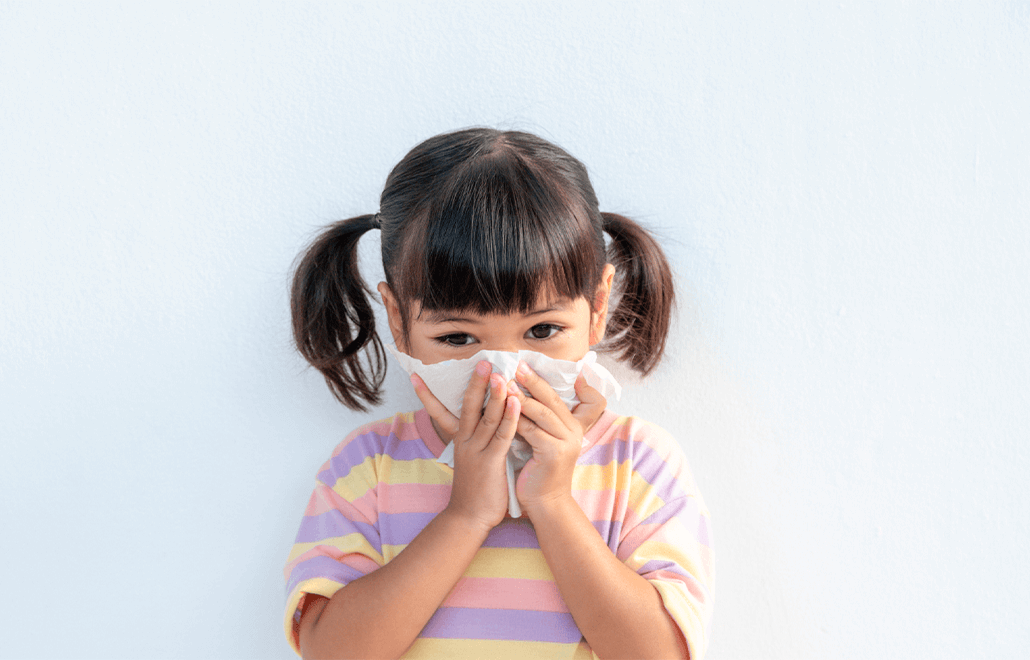
18 Oct Autumn Allergies: How to Manage Seasonal Allergies in Children
3 min. readAs the vibrant colors of autumn leaves paint the landscape, the air becomes crisper, and families gear up for cozy gatherings and outdoor adventures. However, for many children, the arrival of fall also marks the onset of seasonal allergies. Sneezing, itchy eyes, congestion, and other allergic symptoms can dampen the joys of the season. At Continuum Pediatrics, we understand the impact of autumn allergies on children’s well-being, and in this blog post, we’ll provide parents with valuable tips for managing seasonal discomfort and ensuring a smooth transition into the cooler months.
Understanding Autumn Allergies in Children:
Autumn allergies are typically triggered by allergens such as pollen from ragweed, mold spores, and dust mites. These allergens can be especially problematic for children with sensitivities. Here are some strategies to help you manage your child’s seasonal allergies effectively:
- Identify Allergen Triggers:
Pay attention to your child’s symptoms and when they occur. This can help you pinpoint specific allergens that trigger their reactions.
Keep in mind that allergen levels can vary depending on your location and the time of day. Pollen counts are often higher in the morning. - Consult with a Pediatrician:
If you suspect your child has autumn allergies, consult with a pediatrician for an accurate diagnosis. They can perform tests to identify specific allergens.
Your pediatrician will recommend appropriate treatment options based on your child’s age, symptoms, and medical history. - Minimize Allergen Exposure:
Keep windows and doors closed to prevent pollen from entering your home. Use air purifiers with HEPA filters to help remove allergens from the air.
Encourage your child to change clothes and wash their face and hands after spending time outdoors.
Regularly clean and vacuum your home to reduce dust mites and mold. - Medications and Treatments:
Over-the-counter or prescription antihistamines can help relieve allergy symptoms. Consult your pediatrician before giving any medication to your child.
Nasal corticosteroid sprays can reduce nasal inflammation and congestion.
Allergy shots (immunotherapy) may be recommended for children with severe allergies who do not respond well to other treatments. - Create Allergy-Ready Plans:
Work with your child’s school to develop an allergy action plan. Ensure teachers and staff are aware of your child’s allergies and have access to any necessary medications.
Pack allergy-friendly lunches and snacks to avoid allergen exposure at school. - Monitor Pollen Counts:
Keep an eye on daily pollen counts in your area, which are often available through weather websites and apps. On high pollen days, limit outdoor activities.
Consider using a pollen forecast to plan outdoor activities on days when allergen levels are lower. - Stay Hydrated and Maintain a Healthy Diet:
Staying well-hydrated can help thin mucus and reduce congestion.
A balanced diet rich in fruits, vegetables, and whole grains can help support your child’s immune system. - Seek Allergy Immunotherapy:
For some children with severe allergies, allergen immunotherapy (allergy shots) may be recommended. These shots can gradually desensitize your child’s immune system to specific allergens.
Autumn allergies may be a seasonal nuisance, but with the right strategies and guidance from your pediatrician, you can help your child enjoy the beauty of fall without the discomfort of allergies. If your child experiences persistent or severe allergy symptoms, don’t hesitate to reach out to Continuum Pediatrics for professional advice and treatment options tailored to your child’s needs.

